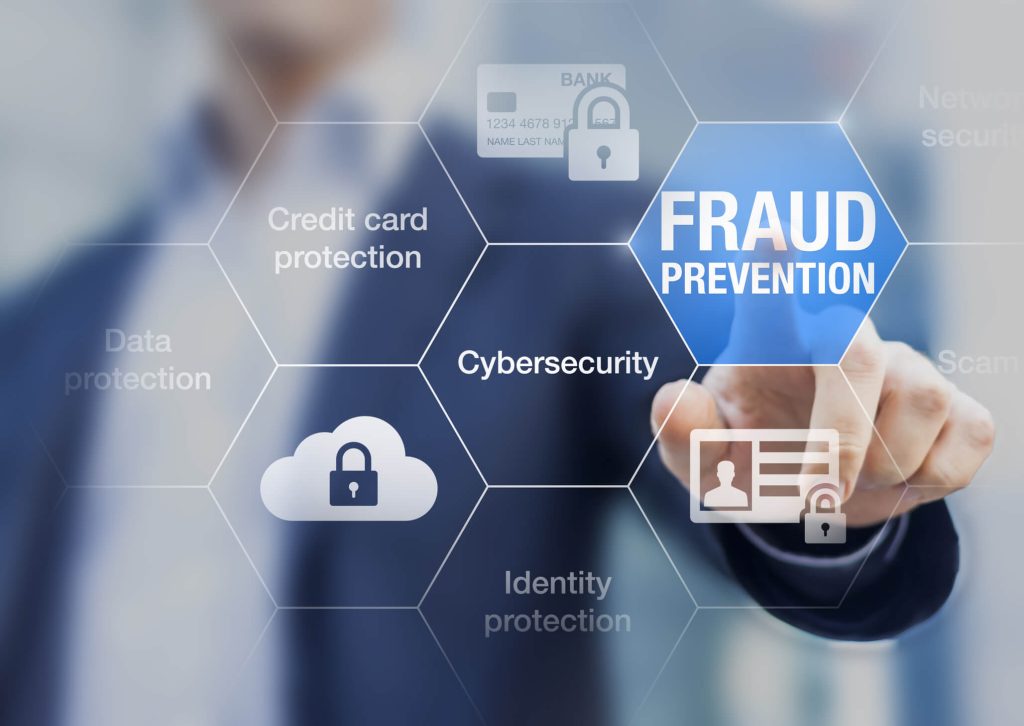
By alphacardprocess April 18, 2024
Chargebacks can be a nightmare for e-commerce businesses, leading to financial losses, damaged reputation, and operational headaches. But fear not, as there are strategies you can implement to mitigate chargebacks and protect your business. In this comprehensive guide, we’ll explore effective techniques to reduce chargebacks in your e-commerce business, safeguarding your bottom line and fostering customer trust.
Understanding Chargebacks: What Are They and Why Do They Occur?
Chargebacks occur when a customer disputes a transaction and requests a refund directly from their bank or credit card company. This process bypasses the merchant, and the funds are taken from the merchant’s account and returned to the customer. Chargebacks can happen for various reasons, including fraud, dissatisfaction with the product or service, unauthorized transactions, or technical issues. Understanding the nature of chargebacks is crucial for effectively addressing and preventing them.
Common Reasons for Chargebacks and How to Address Them
To effectively reduce chargebacks, it is crucial to identify the root causes specific to your business. By analyzing chargeback data and customer feedback, you can gain insights into the reasons behind chargebacks and take appropriate actions. Some common reasons for chargebacks include fraud, unclear or inaccurate product descriptions, poor customer service, technical issues during the checkout process, and unauthorized transactions. By addressing these root causes, you can significantly reduce chargebacks and improve your business’s overall performance.
1. Fraudulent Transactions
Fraudulent transactions are a significant cause of chargebacks. Fraudsters may use stolen credit card information to make purchases, leaving the legitimate cardholder to dispute the transaction. To address this issue, implement robust fraud prevention measures such as address verification systems, card security codes, and IP geolocation tools. Additionally, consider using fraud detection software that can analyze transaction patterns and identify suspicious activities.
2. Dissatisfaction with Product or Service
Customers may initiate chargebacks if they are dissatisfied with the product or service they received. To address this issue, focus on providing high-quality products, accurate product descriptions, and excellent customer service. Promptly respond to customer inquiries and resolve any issues or complaints to prevent chargebacks resulting from dissatisfaction.
3. Unauthorized Transactions
Unauthorized transactions occur when a customer’s credit card information is used without their consent. Implementing secure payment gateways and encryption can help protect against unauthorized transactions. Additionally, regularly monitor your transactions for any suspicious activities and promptly notify customers if any unauthorized charges are detected.
4. Technical Issues
Technical issues such as processing errors, double charges, or incorrect billing can lead to chargebacks. To address this, ensure that your payment processing system is reliable and regularly test it for any glitches or errors. Promptly resolve any technical issues and provide clear and accurate billing information to customers.
Implementing Effective Fraud Prevention Measures in Your E-commerce Business

Fraudulent transactions can be a significant cause of chargebacks. Implementing effective fraud prevention measures is crucial to protect your business and customers. Consider using address verification systems (AVS) and card security codes (CVV) to verify the authenticity of transactions. Additionally, utilize fraud detection tools that analyze transaction patterns and identify suspicious activities. Regularly update your fraud prevention systems to stay ahead of evolving fraud techniques and protect your business from financial losses.
1. Address Verification Systems (AVS)
AVS compares the billing address provided by the customer with the address on file with the credit card issuer. Implement AVS to verify the authenticity of the transaction and reduce the risk of fraudulent chargebacks.
2. Card Security Codes
Require customers to provide the three or four-digit card security code (CVV/CVC) when making a purchase. This additional layer of security helps verify that the customer has physical possession of the card, reducing the risk of fraudulent transactions.
3. IP Geolocation Tools
IP geolocation tools can help identify the location of the customer’s IP address and compare it with the billing address provided. This can help detect potential fraudulent activities, especially if the IP address is from a high-risk country or does not match the billing address.
4. Fraud Detection Software
Consider investing in fraud detection software that uses advanced algorithms to analyze transaction patterns and identify suspicious activities. These tools can help flag potentially fraudulent transactions, allowing you to take appropriate action to prevent chargebacks.
Enhancing Customer Communication and Transparency to Reduce Chargebacks

Clear and transparent communication can significantly reduce chargebacks stemming from misunderstandings or dissatisfaction. Here’s how to improve communication:
1. Clear Return and Refund Policies
Clearly communicate your return and refund policies to customers to manage their expectations. Make sure your policies are easily accessible on your website and include information on how to initiate returns or request refunds. By providing transparent and fair policies, you can reduce the likelihood of customers resorting to chargebacks.
2. Prompt Customer Support
Offer prompt and responsive customer support to address any inquiries or issues customers may have. Provide multiple channels for communication, such as email, live chat, or phone support, and ensure that your customer support team is well-trained and knowledgeable about your products and policies. By promptly addressing customer concerns, you can prevent chargebacks resulting from dissatisfaction or confusion.
3. Order Confirmation and Shipping Notifications
Send order confirmation emails to customers immediately after they make a purchase. Include detailed information about the order, including the product description, quantity, price, and shipping address. Additionally, provide regular shipping notifications to keep customers informed about the status of their orders. By maintaining clear and transparent communication throughout the order fulfillment process, you can minimize the risk of chargebacks resulting from customer confusion or frustration.
Optimizing Your Product Descriptions and Images to Minimize Chargebacks

Ensure your product descriptions are accurate and detailed while providing high-quality images to give customers a clear understanding of what they’re purchasing, thus reducing the likelihood of chargebacks due to misunderstandings.
1. Accurate and Detailed Product Descriptions
Provide accurate and detailed product descriptions that clearly outline the features, specifications, and any limitations of the product. Avoid using misleading or exaggerated language that may lead to customer dissatisfaction. By setting realistic expectations, you can reduce the likelihood of chargebacks resulting from customers feeling misled or disappointed with the product.
2. High-Quality Product Images
Include high-quality product images from multiple angles to provide customers with a clear visual representation of the product. Ensure that the images accurately depict the product’s appearance, color, and size. By providing accurate and appealing visuals, you can minimize chargebacks resulting from customers receiving products that do not meet their expectations.
3. Size and Fit Guides
For apparel or products with size variations, provide detailed size charts or fit guides to help customers make informed purchasing decisions. Clearly communicate how to measure and choose the correct size to reduce the risk of chargebacks resulting from customers receiving ill-fitting products.
Streamlining Your Order Fulfillment Process to Prevent Chargebacks
Focus on efficient inventory management, timely order processing, and secure packaging to minimize errors and delays, ultimately preventing chargebacks stemming from dissatisfaction with the order fulfillment experience.
1. Efficient Inventory Management
Implement robust inventory management systems to ensure accurate stock levels and prevent overselling or backorders. By maintaining accurate inventory records, you can avoid situations where customers are charged for products that are out of stock, reducing the likelihood of chargebacks.
2. Timely Order Processing
Process orders promptly to minimize delays and ensure timely delivery. Clearly communicate your order processing times on your website and provide regular updates to customers if there are any delays. By fulfilling orders in a timely manner, you can reduce the risk of chargebacks resulting from customers feeling frustrated or impatient.
3. Secure Packaging and Shipping
Use secure packaging materials to protect products during transit and minimize the risk of damage. Clearly label packages with the customer’s address and include tracking numbers for easy monitoring. By ensuring that products are securely packaged and accurately shipped, you can reduce chargebacks resulting from damaged or lost shipments.
Utilizing Secure Payment Gateways and Encryption to Protect Against Chargebacks
Implement PCI compliance, tokenization, and SSL encryption to safeguard customer payment information, reducing the risk of chargebacks resulting from data breaches or unauthorized access.
1. PCI Compliance
Ensure that your e-commerce platform and payment gateway are Payment Card Industry Data Security Standard (PCI DSS) compliant. PCI compliance ensures that your customers’ payment card data is securely handled and protected, reducing the risk of chargebacks resulting from data breaches or unauthorized access.
2. Tokenization
Consider implementing tokenization, a process that replaces sensitive payment card data with unique tokens. This ensures that customer payment information is securely stored and transmitted, reducing the risk of chargebacks resulting from compromised card data.
3. SSL Encryption
Use Secure Sockets Layer (SSL) encryption to protect customer data during transmission. SSL encryption ensures that sensitive information, such as credit card details, is securely transmitted between the customer’s browser and your website. By providing a secure browsing experience, you can instill confidence in your customers and reduce the risk of chargebacks resulting from data breaches.
The Importance of Accurate and Timely Shipping to Avoid Chargebacks
Partner with reliable shipping providers, provide tracking numbers, and require delivery confirmation to ensure accurate and timely deliveries, thereby preventing chargebacks related to shipping issues.
1. Reliable Shipping Partners
Choose reliable shipping partners with a track record of timely and accurate deliveries. Research and compare different shipping options to find the most suitable partner for your business. By partnering with reliable shipping providers, you can minimize the risk of chargebacks resulting from delayed or lost shipments.
2. Tracking Numbers
Provide customers with tracking numbers for their orders so they can monitor the progress of their shipments. Include tracking links in shipping confirmation emails or provide a tracking page on your website. By offering transparency and visibility into the shipping process, you can reduce the likelihood of chargebacks resulting from customers feeling uncertain or anxious about the status of their orders.
3. Delivery Confirmation
Require delivery confirmation for high-value or sensitive shipments. This ensures that the customer receives the package and reduces the risk of chargebacks resulting from customers claiming non-delivery. Keep records of delivery confirmations as evidence in case of disputes.
Resolving Disputes and Issuing Refunds to Prevent Chargebacks
Promptly address customer inquiries, issue refunds when appropriate, and establish a clear dispute resolution process to prevent customers from resorting to chargebacks as a means of resolving disputes.
1. Promptly Respond to Customer Inquiries
Respond to customer inquiries or complaints promptly and professionally. Address their concerns and provide solutions or alternatives when necessary. By demonstrating a willingness to resolve issues, you can prevent customers from resorting to chargebacks as a means of seeking resolution.
2. Issue Refunds When Appropriate
If a customer is dissatisfied with a product or service and a refund is warranted, issue the refund promptly. Clearly communicate the refund process to the customer and provide a timeline for when they can expect to receive their refund. By proactively addressing customer dissatisfaction, you can minimize the risk of chargebacks resulting from unresolved disputes.
3. Dispute Resolution
Establish a clear dispute resolution process for handling chargebacks. Familiarize yourself with the chargeback rules and regulations of your payment processor and be prepared to provide evidence to support your case. Keep detailed records of customer interactions, order information, and shipping documentation to strengthen your position in case of disputes.
Monitoring and Analyzing Chargeback Data to Identify Patterns and Take Preventive Measures
Regularly track and analyze chargeback data to identify trends and implement preventive measures to address underlying issues, thus reducing the occurrence of chargebacks over time.
1. Track and Analyze Chargeback Data
Regularly monitor and analyze chargeback data to identify patterns or trends. Look for common reasons for chargebacks, such as specific products, shipping methods, or customer demographics. By understanding the root causes of chargebacks, you can take proactive measures to address them and prevent future occurrences.
2. Implement Preventive Measures
Based on your analysis of chargeback data, implement preventive measures to address the identified patterns. This could include improving product descriptions, enhancing customer communication, updating shipping methods, or implementing additional fraud prevention measures. By continuously refining your processes and addressing the underlying causes of chargebacks, you can reduce their occurrence over time.
FAQs:
Q.1: What is the difference between a chargeback and a refund?
A chargeback is a dispute initiated by the customer with their bank or credit card company, resulting in the funds being taken from the merchant’s account and returned to the customer. A refund, on the other hand, is a voluntary return of funds by the merchant to the customer in response to a request for reimbursement.
Q.2: How can I determine if a chargeback is fraudulent or legitimate?
Determining the legitimacy of a chargeback can be challenging. However, you can review the transaction details, customer communication, and any supporting evidence to assess the validity of the chargeback claim. If you suspect fraud, gather as much evidence as possible and provide it to your payment processor for investigation.
Q.3: Are there any tools or software available to help prevent chargebacks?
Yes, there are various tools and software available to help prevent chargebacks. These include fraud detection software, address verification systems, card security code verification, and IP geolocation tools. These tools can help identify suspicious activities, verify customer information, and detect potential fraudulent transactions.
Q.4: Can chargebacks be completely eliminated from my e-commerce business?
While it is not possible to completely eliminate chargebacks, implementing effective preventive measures can significantly reduce their occurrence. By addressing common reasons for chargebacks, implementing fraud prevention measures, improving customer communication, and optimizing your operations, you can minimize the impact of chargebacks on your e-commerce business.
Q.5: How can I effectively communicate with customers to prevent chargebacks?
To effectively communicate with customers and prevent chargebacks, provide clear and transparent information about your products, policies, and shipping processes. Respond promptly to customer inquiries or complaints and offer solutions or alternatives when necessary. By maintaining open lines of communication and addressing customer concerns, you can reduce the likelihood of chargebacks.
Conclusion
In conclusion, reducing chargebacks in your e-commerce business requires a multi-faceted approach that addresses various aspects of your operations. By understanding the reasons behind chargebacks, implementing fraud prevention measures, improving customer communication, optimizing product descriptions, streamlining order fulfillment, utilizing secure payment gateways, ensuring accurate shipping, resolving disputes promptly, and analyzing chargeback data, you can significantly reduce the occurrence of chargebacks and protect your business.
